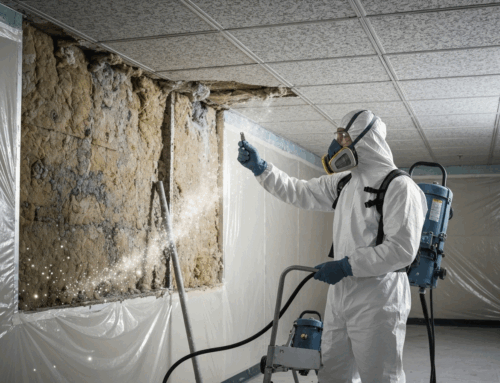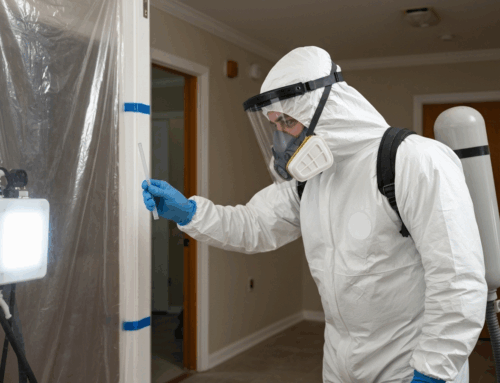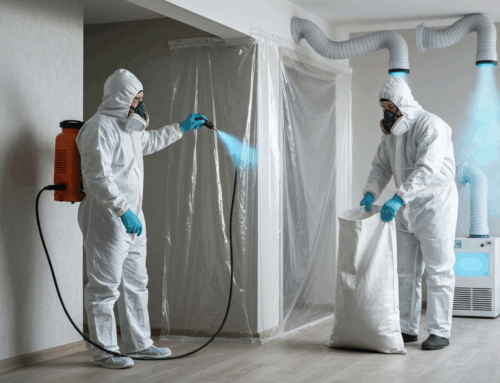Understanding Post-Flood Environmental Risks in South Carolina
South Carolina is no stranger to severe weather events, and while the immediate aftermath of floods and hurricanes brings visible devastation, it’s the hidden dangers that often pose the most significant long-term threats to health and property. Among these invisible hazards are asbestos and mold, insidious contaminants that thrive in damaged and damp environments. Effective Asbestos Mold Remediation South Carolina Floods require a keen understanding of these risks and a swift, professional response. When floodwaters recede, they leave behind not just debris and waterlogged structures, but also ideal conditions for mold growth and the potential disturbance of asbestos-containing materials (ACMs).
The high humidity and moisture levels prevalent after a flood create a perfect breeding ground for mold, which can begin to grow within 24-48 hours. Simultaneously, the structural integrity of older buildings can be compromised, leading to the disturbance of materials containing asbestos. Inhaling mold spores or microscopic asbestos fibers can lead to serious respiratory issues and other severe health problems over time. For homeowners, property managers, and businesses across the state, prioritizing a comprehensive environmental assessment is crucial for a safe and healthy recovery.
Identifying Asbestos Containing Materials in Damaged Structures
Asbestos, a naturally occurring mineral fiber, was extensively used in construction materials for decades due to its heat resistance and insulating properties. Buildings constructed before the 1980s, common throughout South Carolina, are particularly likely to contain asbestos in various components. Flood damage can turn these otherwise stable materials into a hazardous release source.
Common asbestos-containing materials (ACMs) that can be disturbed by flood damage include:
- Roofing shingles and siding
- Floor tiles and their adhesives
- Ceiling tiles and textured ceiling finishes (often called popcorn ceilings)
- Insulation materials around pipes, boilers, and in attics
- Drywall and joint compound
- Vermiculite insulation
The force of floodwaters can easily damage or tear these materials, releasing dangerous fibers into the air. If you suspect your property contains asbestos and has suffered flood damage, it is critical to avoid disturbing the materials further. Professional inspection and testing are the only ways to confirm the presence of asbestos and assess the extent of the contamination.
Initial Safety Steps for Homeowners During Cleanup
The desire to begin cleanup immediately after a flood is understandable, but personal safety must always be the priority. When facing potential asbestos and mold contamination from Asbestos Mold Remediation South Carolina Floods, taking the right initial precautions can significantly minimize health risks.
Here are essential safety steps for homeowners:
- Assume Contamination: If your property was built before 1980 and has suffered significant water damage, assume asbestos-containing materials might be present and treat flood-damaged areas as potentially contaminated with mold.
- Ensure Ventilation: Open windows and doors to increase airflow and aid in drying, if it is safe to do so. This can help reduce the concentration of airborne mold spores.
- Wear Protective Gear: When entering damaged areas, always wear appropriate personal protective equipment (PPE). This should include N-95 respirators, gloves, and protective eyewear to guard against mold spores and potential asbestos fibers.
- Avoid Disturbing Materials: Do not tear, rip, chip, cut, or grind materials that might contain asbestos. Avoid using regular vacuums, which can spread asbestos fibers and mold spores.
- Limit Access: Keep children, pets, and anyone not directly involved in the professional cleanup away from damaged and potentially contaminated areas.
For more detailed guidance on protecting your home and family after a flood, you can consult valuable resources like the FEMA guide on mold cleanup in South Carolina and the EPA’s comprehensive guide for homeowners and renters regarding mold cleanup after disasters. Remember, for severe damage or suspected asbestos, professional help is indispensable.
Professional Asbestos Mold Remediation South Carolina Floods Require
When your South Carolina property is impacted by flood damage, addressing both asbestos and mold swiftly and effectively is paramount. This is where professional expertise becomes invaluable. Piedmont Quality Air specializes in comprehensive asbestos and mold remediation services for both residential and commercial clients, ensuring that your environment is returned to a safe and healthy state. You can learn more about how we handle these issues in our previous article on expert post-hurricane asbestos mold remediation SC services.
Our experienced and trained professionals utilize specialized equipment and adhere to strict federal and state regulations for hazardous material removal. For asbestos, this includes detailed inspections, air quality monitoring, and safe removal techniques to prevent fiber release. For mold, our process involves identifying and rectifying the moisture source, thorough cleaning, and drying to prevent recurrence. We understand the urgency and sensitivity required for Asbestos Mold Remediation South Carolina Floods, aiming to minimize disruption while ensuring complete safety and compliance.
Choosing a professional remediation service means you benefit from:
- Expert Identification: Professionals are trained to accurately identify asbestos and mold, even in hidden areas.
- Safe Removal: Specialized techniques and equipment ensure the safe containment and removal of hazardous materials, preventing further contamination.
- Thorough Cleanup: Beyond removal, professional services include comprehensive cleaning and air purification to eliminate residual contaminants.
- Moisture Control: For mold, professionals address the root cause – moisture – to prevent future growth.
- Regulatory Compliance: Licensed contractors understand and follow all state and federal regulations for asbestos removal and proper disposal.
Navigating Regulations and Proper Disposal of Contaminated Debris
The proper handling and disposal of materials contaminated with asbestos or significant mold after a flood in South Carolina are critical steps that demand strict adherence to regulations. This is not a task for casual disposal, as improper handling can lead to further exposure and legal repercussions.
For asbestos-containing materials, federal and state regulations, especially concerning commercial properties or multi-unit dwellings, mandate specific procedures. These materials must be wetted, carefully double-bagged in specially marked disposal bags, and transported by licensed hazardous waste haulers. Disposal is only permitted at landfills specifically authorized to accept asbestos waste. Attempting to dispose of asbestos improperly is illegal and poses severe health risks to waste handlers and the public. Understanding these regulations is key, and you can find more details in our article about understanding South Carolina asbestos removal laws.
While mold-contaminated materials do not typically fall under the same stringent disposal laws as asbestos, proper handling is still important. Heavily molded porous materials like drywall, insulation, or carpets should be sealed in heavy-duty bags before transport to prevent the spread of spores. While these may often be disposed of in regular construction debris landfills, it is always wise to confirm local municipal regulations.
Professional remediation companies like Piedmont Quality Air manage the entire disposal process, ensuring that all hazardous and contaminated materials are transported and disposed of safely and in full compliance with all federal and South Carolina state regulations.
Essential Resources for Safe Flood Recovery and Beyond
Recovering from a flood involves more than just cleaning up debris; it means restoring your property to a safe and healthy condition, free from hazards like asbestos and mold. For Asbestos Mold Remediation South Carolina Floods, having reliable resources and a professional team on your side is critical.
Piedmont Quality Air is dedicated to ensuring the safety and health of your living and working environments across South Carolina. Our experienced and trained professionals are equipped with specialized equipment and a deep understanding of federal and state regulations. We provide free estimates for asbestos removal, mold removal, and interior demolition services, working diligently to minimize disruption, even in occupied spaces.
Beyond immediate remediation, we offer services designed to prevent future issues and maintain optimal indoor air quality. If your property has been affected by flooding, or if you have concerns about asbestos or mold, don’t hesitate to reach out to certified professionals. Protecting your property and the health of its occupants is our top priority.
Have questions? Contact us here.






